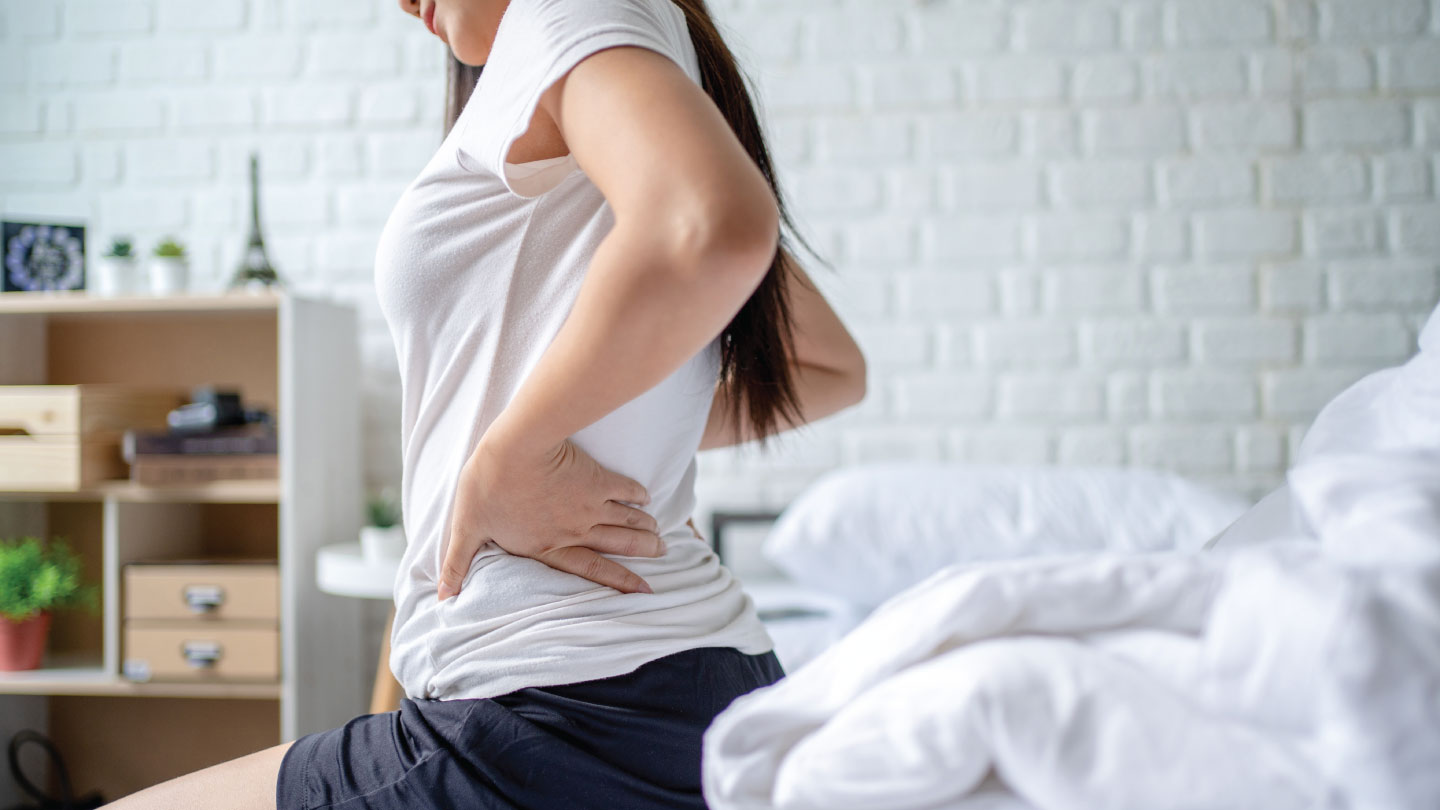Miscellaneous
Why Does My Back Hurt?
Back pain isn’t just about age or a bad mattress. From stress and posture to everyday habits, here’s what’s really behind that stubborn discomfort.

If you’ve found yourself rubbing your lower back by midday, wondering why it hurts again, you’re not alone. Back pain has quietly become one of the most common complaints worldwide. The World Health Organisation (2023) estimates that over 619 million people deal with lower back pain, making it the leading cause of disability across the globe.
In nearly nine out of ten cases, there’s no single injury or damaged disc to blame. Doctors call it non-specific low back pain, meaning it’s often a combination of muscle fatigue, stiffness, poor posture, and stress, rather than a single clear cause.
Related story: Hurt Your Back? Try This Rehab Program
The Everyday Triggers We Don’t Notice
Most of the time, back pain isn’t about something dramatic; it’s about repetition. Think long hours at a desk, hunching over your laptop, carrying bags on one shoulder, or skipping exercise because you’ll stretch tomorrow. These small habits add up.
- Muscle strain: Lifting something awkwardly, twisting too fast, or even sneezing at the wrong angle can strain muscles or ligaments.
- Ageing and wear: Over time, discs lose some of their cushioning. It’s natural, and not always painful, but it can make your back more sensitive to movement.
- Prolonged sitting: Sitting too long, especially in a slouched position, tightens the hip flexors and weakens the lower back. Add a few hours on your phone and you’ve got a recipe for stiffness.
- Lifestyle factors: Lack of physical activity, weight gain, smoking, and high stress can amplify pain by increasing inflammation and muscle tension.
Related story: 6 Tips to Ease Back Pain As Per Latest Research
Why Pain Sometimes Stays Even When You Rest
Sometimes, just a rest is not enough; the pain starts small, you take it easy, and somehow it still lingers. This happens because pain isn’t purely physical. When movement becomes limited, the muscles around your spine weaken, and your brain starts associating even mild discomfort with danger.
This pattern, known as the fear-avoidance cycle, often exacerbates the situation. A 2023 review in Frontiers in Medicine explains that individuals who avoid activity due to fear of pain tend to recover more slowly. Even MRI scans can be misleading. Many people show disc bulges or degeneration on scans but feel no pain, while others have severe pain with normal imaging results.
Related story: 6 Moves to Ease Back Pain
Posture Isn’t the Villain You Think It Is
We've all heard it, “Sit straight!”, as though perfect posture could prevent all back problems. Turns out, that’s a myth. Rigid posture can stress your muscles just as much as slouching does. What really matters is movement, changing positions, stretching, and not locking yourself into one ideal pose.
The World Health Organisation (2023) emphasises that staying active, even with mild pain, is key to recovery. Movement improves blood flow, reduces stiffness, and actually helps your spine heal better than bed rest. So, the next time someone says, “You just need to sit properly,” remind them that flexibility in movement matters more than posture perfection.
Related story: Better Posture, Better Back: Yoga for a Healthy Spine
The Hidden Link Between Your Mind and Back
Stress and back pain are more connected than most people think. When you’re anxious, your body subconsciously tightens muscles, especially in the shoulders and lower back. Add poor sleep to that mix, and your body’s natural pain threshold drops.
A 2022 Journal of Pain Research review found that people with high psychological stress were far more likely to experience recurrent or chronic back pain episodes. This doesn’t mean your pain is in your head. It means stress acts like a volume knob for pain; the higher the tension, the louder the ache feels. Managing stress, improving sleep quality, and staying active all help reduce stress levels.
Related story: Simple Exercises That Can Support Scoliosis of the Spine
Small Adjustments That Make a Big Difference
Most back pain improves with simple, consistent habits rather than drastic interventions.
- Move often. Walk, stretch, or do gentle yoga. Movement encourages blood flow and muscle recovery.
- Alternate postures. If you sit for long periods, stand up every 30–45 minutes to maintain your health. Even a quick stretch can make a difference.
- Build strength slowly. Strengthening your core, glutes, and lower back provides better spinal support.
- Lift smart. Always bend at the knees, not the waist, and keep the weight close to your body.
- Sleep and stress matter. Aim for 7–8 hours of good-quality sleep. Use deep breathing or mindfulness to relax your nervous system.
- Stay consistent. The back responds better to daily movement than sporadic, intense workouts.
Related story: From Stiff to Strong: How Progression Exercises Help With Back Pain
Your back pain isn’t just about your spine; it’s about how you move, sit, think, and live. The spine thrives on motion and balance. It dislikes extremes, whether it’s sitting still for hours, overtraining suddenly, or stressing endlessly. Instead of searching for the perfect posture or a miracle cure, start with small, consistent changes: walk more, stretch daily, and breathe deeply.
Related story: 5 Stretches that Soothe Your Spine
At UR.Life Nutritional Counselling, we believe that personalised guidance is the key to lasting health and wellness. Our expert nutritionists tailor plans to fit your unique lifestyle, dietary needs, and fitness goals, empowering you to make mindful food choices every day. Whether you want to manage your weight, boost your energy, or improve your overall well-being, UR.Life Nutritional Counselling is here to support you on your journey to a healthier, happier life. Join us to nourish your body and transform your habits with confidence.
EXPLORE MORE
What if success isn’t about doing more, but doing what truly matters? Here’s what you need to know about career minimalism.
From daily movement to better sleep, these six science-backed habits can quietly protect your long-term health.
The shift from summer to fall isn’t just about trading breezy dresses and flip-flops for boots and scarves; it’s also a cue that your skincare routine needs a smart refresh.
Back pain doesn’t go away with quick fixes. But with gradual, smarter movement, you can build strength and stay pain-free for good.




.jpg)

.jpg)
